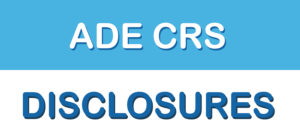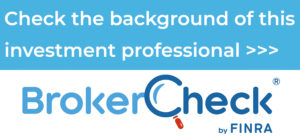THE HIGH PRICE OF FINANCIAL ILLITERACY
Common financial mistakes add up—and can be costly!
A lot of people don’t realize how much money they could save if they stopped nickels, dimes, and dollars from leaving their online accounts, pockets and wallets for reasons that could have been avoided—if they’d been more financially literate.
In a survey in late 2022, the National Financial Educators Council (NFEC) asked this question: “During the past year (2022), about how much money do you think you lost because you lacked knowledge about personal finances?” (1)
The range of answers from 3,001 responding adults averaged $1,819. If the same average were applied nationwide among American adults, the cost of financial literacy would have been $436 billion, according to NFEC calculations.
What is financial illiteracy?
Being financially illiterate means you’re not particularly savvy about managing money, which can impact not only your bank accounts, but also your work, relationships, lifestyle—and physical and mental health.1 Some common mistakes that suggest financial illiteracy include:
Credit card fees and interest: In the fourth quarter of 2022, the average credit card interest rate was 20.40%, according to Federal Reserve data. (2) Because that’s an average, those with bad credit scores faced higher rates. In April 2023, the Consumer Financial Protection Bureau estimated outstanding credit card debt may continue to set records and could hit $1 trillion. (3)
Overdrafts: The NFEC reports that American consumers spend $17 billion a year on overdraft and non-sufficient-funds fees—and that the median bank fee for an overdraft on a debit card is $34 even though most overdrafts are for transactions costing $24 or less. The Consumer Financial Protection Bureau (CFPB) reported in December 2021 that banks are dependent on overdraft fees, with non-sufficient penalties making up two-thirds of their fee revenue. (4)
Luxury spending: Some people may want to get a luxury car or impress friends or coworkers with to-die-for handbags, glasses, clothing, jewelry—or something else. But is that really a good idea? Someone may love that $175,000 crocodile Hermès handbag they saw for sale online—but wouldn’t a $75 handbag work just as well?
Identity theft scams and fraud: The FBI reported that Americans lost nearly $7 billion to identity theft in 2021. (5) Although financial illiteracy may not be the reason why people fall for fraud, those who lack money knowledge and awareness are more susceptible to scams, according to the NFEC.
Ways that financial literacy may improve
Just like reading skills, financial literacy requires learning, practicing what you’ve learned, and—if you have a willing listener—sharing what you’ve learned. That can help others become more financially literate too.
The National Endowment for Financial Education (NEFE) surveyed adults in 2022 about whether high school financial education should be required for graduation, and which key topics should be taught. (6) The results showed:
88% said their state should require a semester-long or year-long financial education course for graduation.
80% said they wish they had been required to take a semester-long or year-long financial education course during high school.
75% said that spending and budgeting is the most important financial education topic to teach for personal finance education, followed by managing credit (55%), saving (49%) and earning income (47%).
The most recent numbers of the Council for Economic Education (CEE) reveal that 25 states now require students to take a course in economics in order to graduate, and 23 states require students to take a course in personal finance in order to graduate. (7) Although the number of states adding these requirements is small, CEE reports personal finance education is making slow but steady increases.
As we know, small steps add up—just as small savings do.
Thanks for checking out the blog.
Gregory Armstrong , CFP®
Sources
(1) Financial Illiteracy Cost Americans $1,819 in 2022
(2) Business Insider, The average credit card interest rate by credit score and card, March 27, 2025
(4) CFPB Research Shows Banks’ Deep Dependence on Overdraft Fees, Dec. 1, 2021
(5) Federal Bureau of Investigation Internet Crime Report, 2021
(6) NEFE: New Data Highlights Demand During Financial Capability Month, April 25, 2022
(7) CEE: 2022 Economic and Personal Finance Education in our Nation’s Schools, Survey of the States
This material is for general information only and is not intended to provide specific advice or recommendations for any individual. There is no assurance that the views or strategies discussed are suitable for all investors or will yield positive outcomes. CDs are FDIC Insured to specific limits and offer a fixed rate of return if held to maturity, whereas investing in securities is subject to market risk including loss of principal.
The Standard & Poor’s 500 Index is a capitalization weighted index of 500 stocks designed to measure performance of the broad domestic economy through changes in the aggregate market value of 500 stocks representing all major industries. All performance referenced is historical and is no guarantee of future results. All indices are unmanaged and may not be invested into directly.
This material was prepared by LPL Financial.
Securities and advisory services offered through LPL Financial (LPL), a registered investment advisor and broker-dealer (member FINRA/SIPC).
Insurance products are offered through LPL or its licensed affiliates. To the extent you are receiving investment advice from a separately registered independent investment advisor that is not an LPL Financial affiliate, please note LPL Financial makes no representation with respect to such entity.
Securities and insurance offered through LPL or its affiliates are: 









